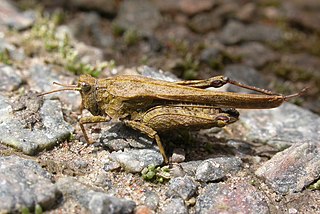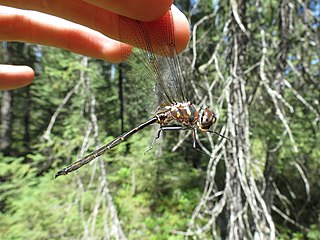
The Integrated Taxonomic Information System (ITIS) is an American partnership of federal agencies designed to provide consistent and reliable information on the taxonomy of biological species. ITIS was originally formed in 1996 as an interagency group within the US federal government, involving several US federal agencies, and has now become an international body, with Canadian and Mexican government agencies participating. The database draws from a large community of taxonomic experts. Primary content staff are housed at the Smithsonian National Museum of Natural History and IT services are provided by a US Geological Survey facility in Denver. The primary focus of ITIS is North American species, but many biological groups exist worldwide and ITIS collaborates with other agencies to increase its global coverage.

Sphaerites is a genus of beetles, the only genus in the family Sphaeritidae, sometimes called the false clown beetles. It is closely related to the clown beetles but with distinct characteristics. There are five known species, widespread in temperate area but not commonly seen.

Fire-coloured beetles or otherwise known as eyelash bugs are the beetles of the Pyrochroidae family, which includes the red cardinal beetles. Adults measure 4-20 mm; larvae reach 25 mm. Larvae of Pyrochroinae are found under moist bark of dead trees:they are probably mostly fungivorous, although they may become cannibalistic if too crowded.

The Heteroceridae, or variegated mud-loving beetles, are a widespread and relatively common family of beetles. They occur on every continent except for Antarctica.

The family Pythidae is a small group of beetles with no vernacular common name, though recent authors have coined the name dead log bark beetles. There are about 10 genera and 17 described species in Pythidae.

The Ochteridae comprise a small family of insects. Eight genera with about 80 species have been described. They occur worldwide along the shore of various types of water and the greatest diversity is in tropical regions. They are "true bugs", being members of the order Hemiptera, and are in the suborder Heteroptera. Ochteridae commonly are known as the velvety shore bugs. They resemble the Saldidae shore bugs and have lengths ranging from 4.5 to 9 mm (0.18–0.35 in).

The Catalogue of Life is an online database that provides the most comprehensive and authoritative index of known species of animals, plants, fungi, and microorganisms. It was created in 2001 as a partnership between the global Species 2000 and the American Integrated Taxonomic Information System. The Catalogue interface is available in twelve languages and is used by research scientists, citizen scientists, educators, and policy makers. The Catalogue is also used by the Biodiversity Heritage Library, the Barcode of Life Data System, Encyclopedia of Life, and the Global Biodiversity Information Facility. The Catalogue currently compiles data from 168 peer-reviewed taxonomic databases, that are maintained by specialist institutions around the world. As of 2019, the Catalogue lists 1,837,565 of the world's 2.2m extant species known to taxonomists on the planet at present time.

Tetrix is a genus of ground-hoppers or pygmy grasshoppers in the family Tetrigidae. There are at least 180 described species in Tetrix.
Aidophus parcus is a species of aphodiine dung beetle in the family Scarabaeidae. It is found in North America.
Aidophus is a genus of aphodiinae dung beetles in the family Scarabaeidae. There are about 12 described species in Aidophus.
Cercopeus is a genus of broad-nosed weevils in the beetle family Curculionidae. There are about 17 described species in Cercopeus.
Sitona lineellus, the alfalfa curculio, is a species of broad-nosed weevil in the beetle family Curculionidae. It is found in North America.
Euphilotes spaldingi, or Spalding's blue, is a butterfly of the family Lycaenidae. The species was first described by William Barnes and James Halliday McDunnough in 1917. It is found in North America.

Sumitrosis rosea, a leaf-mining beetle, is a species of leaf beetle in the family Chrysomelidae. It is found in North America.
Microhyus is a genus of true weevils in the beetle family Curculionidae. There is at least one described species in Microhyus, M. setiger.
Dietzianus pygmaeus is a species of true weevil in the beetle family Curculionidae. It is found in North America.

Enallagma hageni, or Hagen's bluet, is a species of narrow-winged damselfly in the family Coenagrionidae. It is found in North America.

Barynotus moerens is a species of broad-nosed weevil in the beetle family Curculionidae. It is found in North America.

Somatochlora forcipata, the forcipate emerald, is a species of emerald dragonfly in the family Corduliidae. It is found in North America.
Trimerotropis occidentiloides is a species of band-winged grasshopper in the family Acrididae. It is found in North America.











